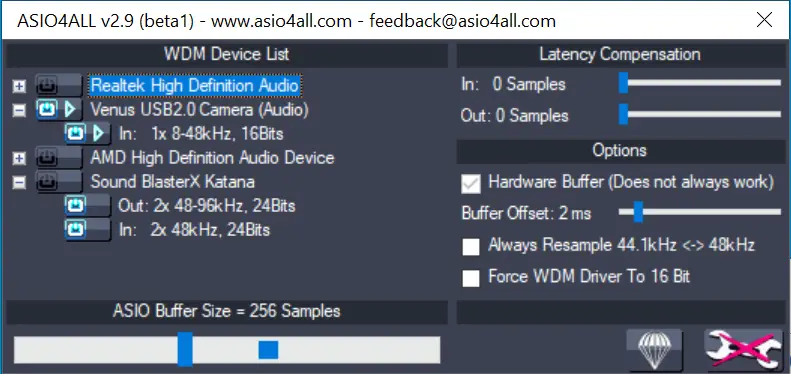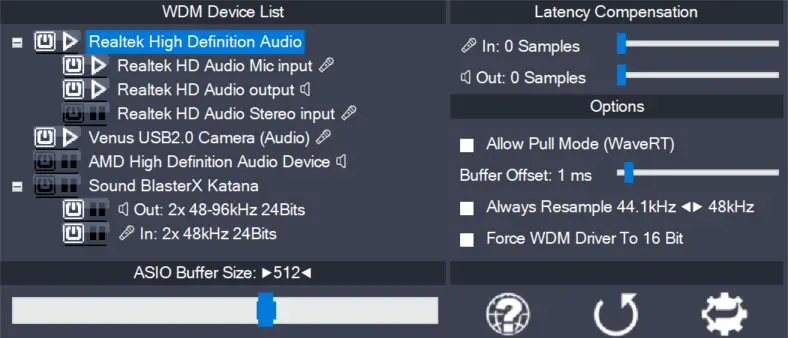Changes since version 2.8:
- The GUI changed somewhat, but almost everything will be just about where it used to be. You’ll find your way ’round! W is gone since soon he will be indeed.
- Add system tray access to control panel and status indicator.
- Control panel now remembers its screen position.
- Workaround for IDT HD Audio driver registering WaveRT interface under XP.
- Un-blacklisted STHDA for sample rates above 48kHz. Out on probation now.
- Workaround for WaveRT event mode seemingly still broken in WOW64, even after Vista 64 SP1.
- Improve WaveRT performance in Vista.
- Add host application interface, giving developers the option to control ASIO4ALL configuration from inside their application.
- And, once again: More minor improvements, most of which mainly serve to increase fault tolerance, others may change the world as we know it, but, alas, over time I had forgotten which ones and in what way exactly.





Leave a Reply